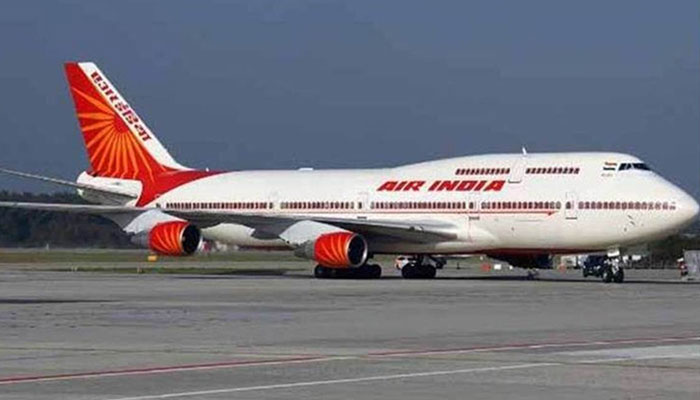Why has EU never banned Indian airlines flown by fake pilots?
LAHORE: It is not just Pakistan where reports about airline pilots possessing bogus flying licenses has sent shivers down the diaphragms of both state functionaries and the travelers, but a fake pilot scam had also surfaced in neighboring India during 2011 when far more1 frightened and rattled aviation authorities across the border had to check licenses of 4,000 pilots for irregularities.While the European Union Air Safety Agency, which has a responsibility for civil aviation safety, certification, regulation, standardization, investigation and monitoring of airlines flying over the Continent’s skies, has suspended the authorization for the Pakistan International Airlines to operate within the 25 countries under its jurisdiction, it has never imposed similar restrictions for the Indian carriers flown by fake pilots.
No other aviation body within the European Union also had the audacity to hand over any sort of penalty to Indian carriers that have been playing with lives of passengers for decades.
Pakistan still has a right to appeal against European Union Air Safety Agency’s decision and can plead that why only PIA was penalized when this issue of fake pilots was far more serious in India!
Research conducted by the “Jang Group and Geo Television Network” reveals that India has a history of arresting pilots with phony licenses and mark-sheets, besides penalizing them for being drunk during duty hours and for falling asleep while flying.
During July 2019, the Indian Ministry of Defence had divulged to its national media houses that since 2010, at least 20 pilots were successful in obtaining licenses on the basis of forged documents. Among these 20, licenses of 15 people were suspended while five pilots were either debarred or their Airport Transport Pilot license was cancelled.
The 15 people, whose licenses were suspended, had submitted a fake mark sheet of Central Examination Organization conducted by Indian Directorate General of Civil Aviation.
In March 2011, according to the “BBC News,” the licenses of some 21 pilots were revoked by India's aviation authorities as they were allegedly proved to be flying with fake documents.
A March 2011 report of Indian “NDTV” had stated: “Just a few days after Parminder Kaur Gulati, a suspended pilot of Indigo airline, was arrested on charges of faking her mark-sheet to get a pilot license, another arrest on the same grounds has been made. This time around, Captain JK Verma, a pilot of the national carrier Air India has been arrested. The airline watchdog admits there was a lapse, but says 4000 pilot licenses are now under fresh scrutiny. Earlier this month authorities said that they were taking action against 57 pilots who had reported for duty drunk over the past two years. Over the same period there have also been reports of pilots falling asleep while flying and pilots fighting with air crew.”
In June 2015, an eminent American media house “Bloomberg” had asserted: “Concern about the quality of India’s pilots has been building over the past decade as a proliferation of budget airlines created demand for hundreds of new pilots. In 2011, the government reviewed the licenses of all 4,000-plus airline pilots in the country, as police investigated at least 18 people suspected of using forged documents to win promotions or certification. The findings of the review were not made public.”
The 39-year old American financial, software, data, and media house headquartered in Manhattan, New York City, had gone on to flash a headline reading “You can get a pilot license in India after just 35 minutes in air!”
The reputed US media house had substantiated: “Pilot Anupam Verma has a certificate that shows he has flown an aircraft for 360 hours. He says he got it after sitting in the co-pilot’s seat for just 35 minutes. He’s one of dozens of pilots in the country who obtained certificates showing inflated flying hours and ground training, according to court documents and interviews with pilots, regulators and industry analysts. The son of a poor farmer, Verma was given a 2.8 million-rupee ($44,000) subsidy by the Indian government to learn to fly a commercial jet.”
The “Bloomberg” had gone on to cite a terrific episode: “The spotlight on aviation safety has swung from aircraft reliability to pilot reliability in the past few years after a series of disasters that were thought to be either deliberate acts of destruction, or the result of inadequate training. The latest, in March, killed 150 people when airline Germanwings’ co-pilot Andreas Lubitz appears to have locked his captain out of the cockpit and flown his jet into a mountain.”
The “Bloomberg” had then painted a horrific picture about the safety norms in India being flouted and the menace of “Over-logging.”
It had added: “Over-logging has been common practice in India since the 1960s, according to a retired commander who has flown in India for over 40 years and asked not to be named because the information was confidential. With the increase in budget airlines the typical number of faked hours rose from about 20 hours to a peak of as much as 150, he said. He said airlines can soon tell if a pilot has faked certificates because they don’t have basic skills, but the carrier can’t fire them because they have DGCA licenses. To bring them up to scratch, airlines have to do expensive corrective training, he said.”
-
 Jason Momoa Says Being With Beau Adria Arjona Feels 'perfect'
Jason Momoa Says Being With Beau Adria Arjona Feels 'perfect' -
 Idris Elba Says One Mix-up Nearly Cost Him A Knighthood From King Charles
Idris Elba Says One Mix-up Nearly Cost Him A Knighthood From King Charles -
 Andrew Mountbatten Windsor Incurs Anger Of Biggest Royal
Andrew Mountbatten Windsor Incurs Anger Of Biggest Royal -
 Megan Fox, Machine Gun Kelly's Relationship 'is Just About Co-parenting'
Megan Fox, Machine Gun Kelly's Relationship 'is Just About Co-parenting' -
 Prince Harry, Meghan Markle Warned They Can’t Fool Brits Because It Won’t Land
Prince Harry, Meghan Markle Warned They Can’t Fool Brits Because It Won’t Land -
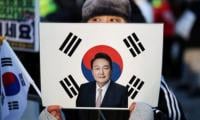 South Korea’s Ex-president Yoon Suk Yeol, Sentenced To 5 Years In Prison: Key Details Explained
South Korea’s Ex-president Yoon Suk Yeol, Sentenced To 5 Years In Prison: Key Details Explained -
 Princess Beatrice Is ‘terrified’ Of Mom Fergie: ‘She’s Begging Her To Not Destroy Her Future’
Princess Beatrice Is ‘terrified’ Of Mom Fergie: ‘She’s Begging Her To Not Destroy Her Future’ -
 Harry Styles’ New Album Earns Subtle Nod From Zoe Kravitz’s Dad
Harry Styles’ New Album Earns Subtle Nod From Zoe Kravitz’s Dad -
 Ari Emanuel Makes A Decision Regarding His Memoir Alongside Prince Harry’s Ghostwriter
Ari Emanuel Makes A Decision Regarding His Memoir Alongside Prince Harry’s Ghostwriter -
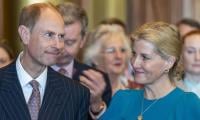 Buckingham Palace Gives The Spotlight To The Duke And Duchess Of Edinburgh: Video
Buckingham Palace Gives The Spotlight To The Duke And Duchess Of Edinburgh: Video -
 Eva Mendes Revisits Year She Hid Pregnancy
Eva Mendes Revisits Year She Hid Pregnancy -
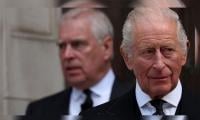 Andrew’s Eviction Marks: ‘the End Of Grifting’: ‘It A Catastrophic Fall From Grace’
Andrew’s Eviction Marks: ‘the End Of Grifting’: ‘It A Catastrophic Fall From Grace’ -
 ASAP Rocky Disses Rihanna's Ex Drake In New Track
ASAP Rocky Disses Rihanna's Ex Drake In New Track -
 Jennifer Aniston, Jim Curtis Face One Major Hurdle In Their Union
Jennifer Aniston, Jim Curtis Face One Major Hurdle In Their Union -
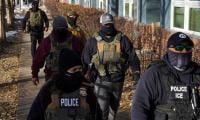 Restaurant Workers Detained After ICE Agents Dine At Minnesota Eatery
Restaurant Workers Detained After ICE Agents Dine At Minnesota Eatery -
 Kate Middleton Reveals Sport She Would Not Play With Prince George
Kate Middleton Reveals Sport She Would Not Play With Prince George
